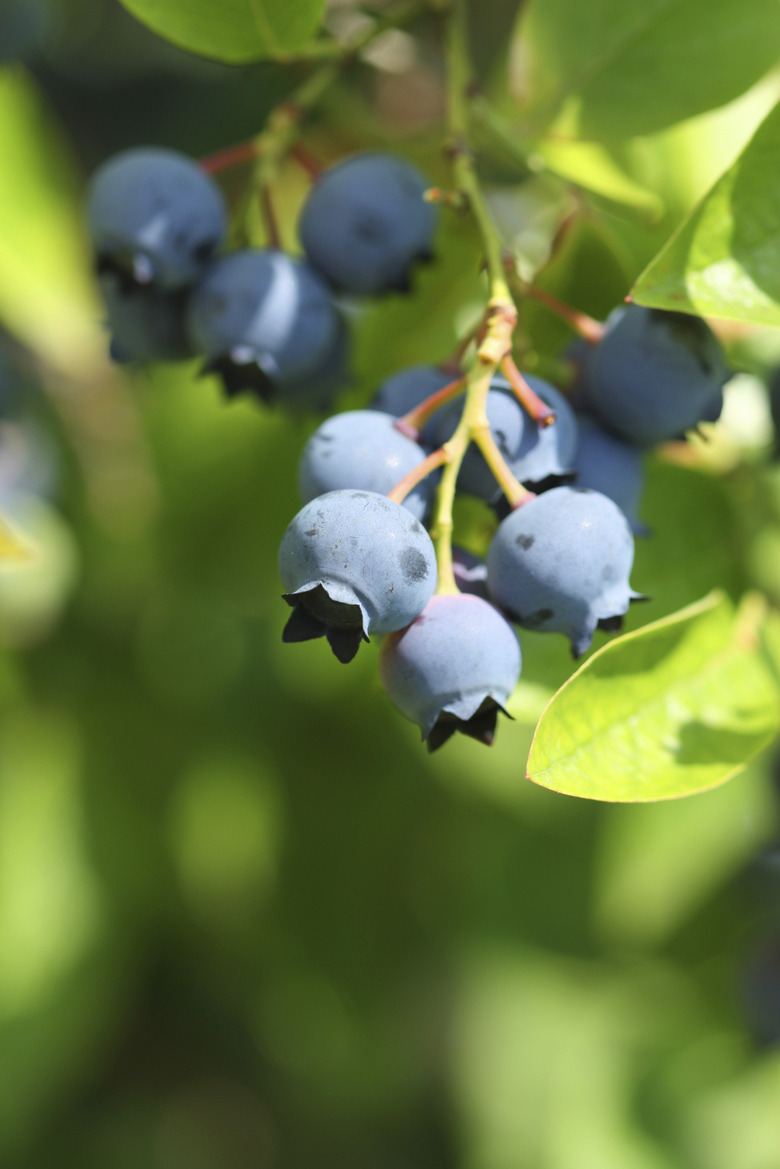The Difference Between A Bilberry & A Blueberry
Bilberry (Vaccinium myrtillus and Vaccinium oreophilum) is closely related to the several species of berry bushes commonly called blueberry (Vaccinium spp.). It is, in fact, in the same genus as the blueberry species, and the plants and berries of all the species appear very similar to one another.
Bilberry (Vaccinium myrtillus and Vaccinium oreophilum) is closely related to the several species of berry bushes commonly called blueberry (Vaccinium spp.). It is, in fact, in the same genus as the blueberry species, and the plants and berries of all the species appear very similar to one another. Differences in the growth habits of the plants and their berries, though, can help you distinguish the species from each other.
Bilberry Form and Habitat
Bilberry is a widespread wild plant that grows in wooded areas, typically at high elevations, in North America, Europe and Asia. In North America, it grows wild in parts of the Rocky Mountains. It is hardy in U.S. Department of Agriculture plant hardiness zones 3 through 7.
Bilberry bushes are small and low-growing, usually reaching a height of 6 to 24 inches. In a garden, bilberry grows best in well-drained soil and can tolerate some shade but produces more berries when it gets full-sun exposure. Like other Vaccinium species, it also thrives in acidic soil with a pH level of 4.5 to 6.
- Bilberry (Vaccinium myrtillus and Vaccinium oreophilum) is closely related to the several species of berry bushes commonly called blueberry (Vaccinium spp.).
- Differences in the growth habits of the plants and their berries, though, can help you distinguish the species from each other.
Blueberry Species
Blueberries are native to North America, and a few types are commonly cultivated in the United States. They include northern highbush blueberries (Vaccinium corymbosum), which are hardy in USDA zones 3 through 7, and southern highbush (Vaccinium corymbosum hybrid, USDA zones 5 through 10). Other commonly grown types are wild lowbush blueberries (Vaccinium angustifolium, USDA zones 3 through 7) and rabbiteye blueberries (Vaccinium ashei, USDA zones 7 through 9).
In cultivation, blueberries do best in conditions very similar to those preferred by bilberry. They produce best when grown in well-drained, acidic soil and full sun.
Plant Comparison
Highbush and rabbiteye blueberry bushes are much larger than the low-growing bilberry bush. Northern highbush cultivars range in height from 3 to 8 feet, and rabbiteye blueberry bushes can reach a height of 12 feet.
- Blueberries are native to North America, and a few types are commonly cultivated in the United States.
- Other commonly grown types are wild lowbush blueberries (Vaccinium angustifolium, USDA zones 3 through 7) and rabbiteye blueberries (Vaccinium ashei, USDA zones 7 through 9).
Wild lowbush blueberry varieties are much closer in height to bilberry bushes, and some of them, like bilberry, spread via underground rhizomes to produce a low ground cover, making them difficult to differentiate from bilberry bushes.
Fruit Comparison
Both bilberry and blueberries have fruits that are round and dark, ranging from a dark blue to nearly black. Bilberry produces single berries at the point where the leaf meets the stem on new shoots. Blueberries, by contrast, produce clusters of berries, and highbush and lowbush blueberries produce fruits on year-old stems, resulting in a relatively high yield per bush.
Although the exteriors of bilberry and blueberry fruits are very similar, the fruits' interior flesh varies in color. Bilberry fruit pulp is dark red; blueberry fruit pulp is whitish or light green.
References
- Plants for a Future: Vaccinium Myrtillus
- Agriculture and Agri-Food Canada: Vaccinium Myrtillus L. (Bilberry)
- University of Idaho Extension: Huckleberries and Bilberries
- Fall Creek Farm and Nursery Inc.: Northern Highbush — High Chill
- Fall Creek Farm and Nursery Inc.: Wild Lowbush Blueberries — High Chill
- Floridata: Vaccinium Ashei
- U.S. Department of Agriculture, Forest Service: Plant of the Week — Dwarf Bilberry (Vaccinium Cespitosum Michaux)
